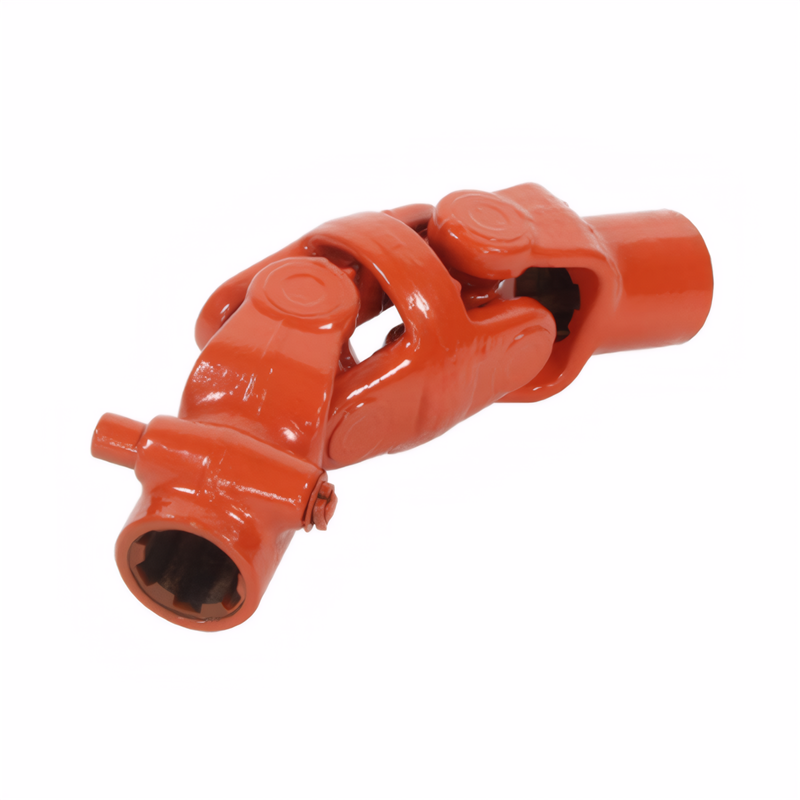Customized design of drive shafts for special vehicles
Custom Design Considerations for Special-Purpose Vehicle Drive Shafts
Structural Adaptability to Vehicle Layout
Special-purpose vehicles often require customized drive shaft configurations due to unique chassis modifications and load distribution demands. For instance, fire trucks with elevated platforms necessitate drive shafts with adjustable lengths to accommodate varying suspension heights during operation. The design must ensure that the maximum transmission angle between connected components remains below 4° under full load conditions to prevent excessive wear on universal joints.
In refuse collection vehicles equipped with rear-mounted compactors, the drive shaft must withstand torsional loads exceeding 5,000 N·m while maintaining a critical rotational speed above 4,500 rpm. This requires precise calculation of shaft diameter and wall thickness using formulas derived from beam theory, where the outer diameter (D) and inner diameter (d) relationship follows .
For specialized agricultural machinery with articulated frames, the drive shaft design incorporates double-cardan joints at both ends to maintain constant velocity transmission during frame flexing. This configuration reduces vibration levels by 60% compared to single-joint systems when operating on uneven terrain.
Material Selection for Enhanced Durability
The operational environment of special-purpose vehicles dictates specific material requirements for drive shaft components. Ambulances operating in arctic regions demand drive shafts made from 40CrNiMo alloy steel, which retains 85% of its room-temperature tensile strength at -40°C. This material's low-temperature toughness prevents brittle fracture during sudden acceleration on icy roads.
Concrete mixer trucks require drive shafts with superior corrosion resistance due to constant exposure to cement slurry. The shaft tubes are manufactured using 316L stainless steel with a surface hardness of 450 HV after nitriding treatment, providing 10 times better resistance to pitting corrosion compared to standard carbon steel.
For high-speed emergency response vehicles, carbon fiber composite drive shafts offer a 40% weight reduction while maintaining equivalent torsional stiffness. These shafts incorporate aluminum end fittings to handle 90% of the transmitted torque, with the carbon fiber layer providing vibration damping that reduces noise levels by 8 dB(A) at 3,000 rpm.
Dynamic Load Management Systems
Special-purpose vehicles often experience extreme load variations that require sophisticated drive shaft designs. Logging trucks transporting heavy timber loads need drive shafts with torque-limiting couplings that disengage at 120% of nominal torque to protect the transmission from overload damage. These couplings reset automatically when torque returns to safe levels.
Military tactical vehicles operating in desert environments use drive shafts with self-lubricating bushings made from polyether ether ketone (PEEK) composite. These bushings reduce friction coefficient by 75% compared to traditional bronze bushings, extending maintenance intervals from 5,000 km to 20,000 km in sandy conditions.
For airport baggage tractors, the drive shaft design incorporates vibration isolators with a natural frequency of 18 Hz to suppress resonance caused by frequent starting and stopping. These isolators reduce transmission of structural-borne noise into the cabin by 12 dB, improving operator comfort during 12-hour shifts.
Precision Manufacturing Tolerances
The production of special-purpose vehicle drive shafts demands micrometer-level precision to ensure reliable operation. For aerial work platforms, the drive shaft spline teeth must maintain a positional accuracy of ±0.02 mm to prevent binding during platform elevation. This requires CNC broaching machines with sub-micron positioning control.
In mining dump trucks, the drive shaft flanges require a perpendicularity tolerance of 0.05° relative to the shaft axis to prevent oil leakage from the differential. Laser welding technology is employed to attach the flanges with a heat-affected zone smaller than 0.5 mm, maintaining the base material's mechanical properties.
For medical transport vehicles, the drive shaft balancing accuracy must reach ISO Grade G0.4 to eliminate vibrations that could affect sensitive equipment. This requires dual-plane dynamic balancing machines capable of detecting 0.5 g·cm imbalance at 6,000 rpm rotational speeds.
 The inspection method for the
The inspection method for the
 Symptoms of wear of the univer
Symptoms of wear of the univer
 Analysis of the Causes of Abno
Analysis of the Causes of Abno
 The ability of the drive shaft
The ability of the drive shaft
 简体中文
简体中文 English
English
